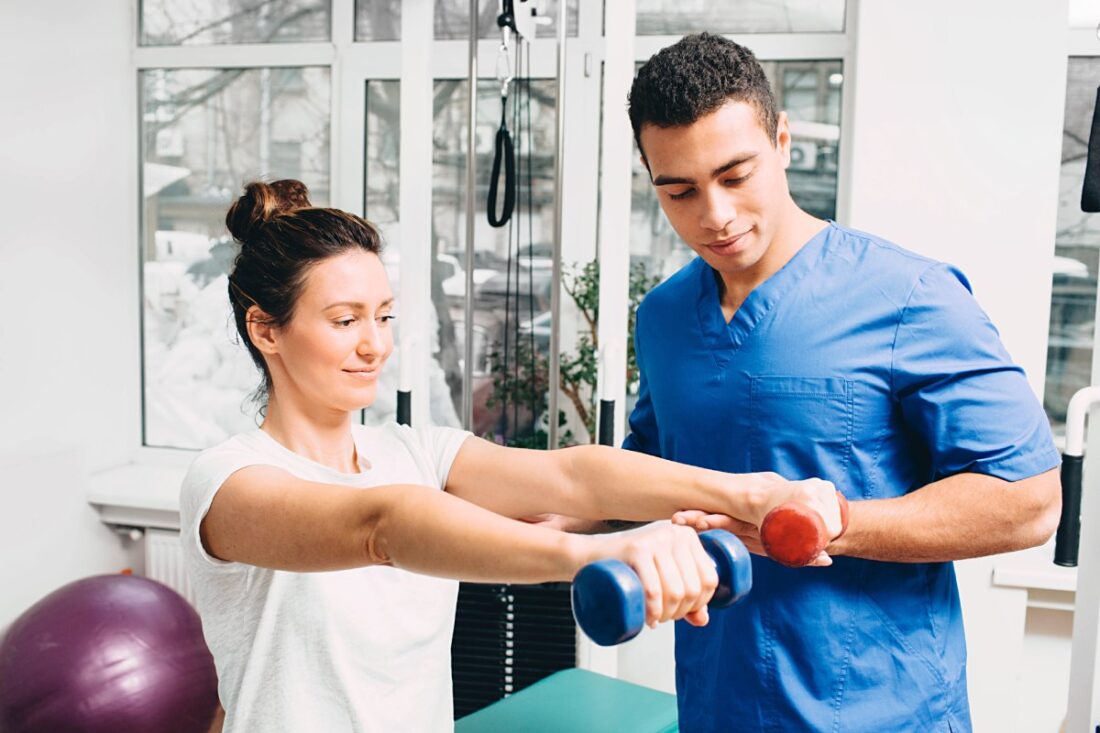1. Introduction
Athletes push their bodies to the limit. Whether it’s sprinting down a field, pivoting on the court, or launching into a powerful serve, every move demands precision and strength. But with intensity comes risk. Sports injuries can sideline even the most elite performers. The good news? Sports Physical Therapy offers a proactive, science-backed solution to prevent injuries before they happen—and keep athletes performing at their best.

2. What Is Sports Physical Therapy?
Unlike traditional physical therapy, sports physical therapy focuses specifically on the needs of active individuals—especially athletes. It’s a specialized field designed not only to treat injuries but also to prevent them through strength training, movement correction, and recovery techniques tailored to each sport.
3. The Role of a Physical Therapist in Injury Prevention
A Physical Therapist working with athletes evaluates multiple aspects of physical function:
- Range of motion
- Muscle imbalances
- Joint stability
- Posture and form during sport-specific movements
Based on the findings, the therapist designs a custom program that addresses weak spots, enhances mobility, and reinforces proper biomechanics.
4. Common Sports Injuries That Can Be Prevented
Here’s a look at the most frequent injuries athletes face and how Sports Physical Therapy steps in early:
| Injury Type | Prevention Strategy Through PT |
| ACL tears | Strengthening hamstrings and glutes, neuromuscular training |
| Rotator cuff injuries | Shoulder stabilization, posture correction |
| Shin splints | Footwear analysis, calf muscle conditioning |
| Stress fractures | Load management, cross-training plans |
| Tennis elbow | Grip strength training, wrist mobility exercises |
5. Key Benefits of Preventive Physical Therapy
5.1. Improved Flexibility
Targeted stretches improve joint mobility, which reduces the likelihood of strains and sprains.
5.2. Enhanced Strength
Programs focus on sport-specific muscle groups. Runners, for example, benefit from glute activation and core stability.
5.3. Corrected Movement Patterns
Poor mechanics often lead to overuse injuries. A Physical Therapist corrects gait, posture, and form through biomechanical analysis.
5.4. Better Balance & Coordination
Through proprioceptive training and neuromuscular control, PT enhances agility and reaction time—crucial for sports performance.
6. Screening & Risk Assessment
Athletes undergo Functional Movement Screens (FMS), jump landing assessments, and agility drills. These tools help identify asymmetries and red flags before injuries occur.
7. Prehabilitation: The New Standard
Prehabilitation—“prehab”—refers to a customized program designed before an injury occurs. A growing number of elite athletes now integrate Sports Physical Therapy into their off-season training to reduce injury risk.
8. Real-Life Example: How PT Prevented a Season-Ending Injury
Meet Jake, a high school football player with recurring knee pain. A Physical Therapist identified a hip weakness causing poor knee alignment. Within six weeks of corrective exercises, Jake returned to the field pain-free and injury-resistant.
9. Youth Athletes & Injury Prevention
Young athletes are increasingly at risk due to early sports specialization. PT for youth focuses on:
- Age-appropriate training volumes
- Growth plate protection
- Balanced muscular development
It ensures they build a solid foundation without overuse or burnout.
10. Role of Technology in Sports PT
Modern Sports Physical Therapy uses tools like:
- Motion capture
- Wearable sensors
- Force plates
These tools enhance diagnosis, measure improvements, and fine-tune injury prevention protocols.
11. What Makes Sports PT Different from Traditional PT?
| Aspect | Sports Physical Therapy | Traditional Physical Therapy |
| Focus | Athletic performance + injury prevention | General rehabilitation |
| Evaluation Tools | Sport-specific analysis | Broad function-based tests |
| Techniques Used | Plyometrics, agility drills, strength cycles | Stretching, heat/cold therapy |
| Recovery Goals | Return to sport at peak ability | Resume daily functional activity |
For anyone looking to optimize their performance or stay in the game, the choice is clear: Sports Physical Therapy provides the edge.
12. How Often Should Athletes See a Physical Therapist?
It depends on activity level, injury history, and sport. Elite athletes often check in biweekly or monthly, while others may visit only during preseason or after intense training blocks.
13. Injury Prevention Tips from Sports PT Experts
- Warm up dynamically: Swap static stretches for lunges, skips, and active movement
- Cool down properly: Foam roll and gently stretch post-workout
- Listen to your body: Pain is not gain—seek early intervention
- Cross-train: Varying movement patterns protects against overuse
- Sleep & nutrition: Recovery is where growth and protection happen
14. Long-Term Impact of Injury Prevention
Avoiding even one major injury:
- Extends athletic careers
- Saves thousands in surgery or rehab costs
- Protects long-term joint health and mobility
Prevention is truly the most valuable form of physical therapy.
15. Conclusion
In the high-stakes world of sports, staying injury-free isn’t just lucky—it’s strategic. With the help of Sports Physical Therapy, athletes build strength, fix movement flaws, and maintain the resilience needed to keep pushing boundaries. Whether you’re a rising young athlete or a seasoned pro, partnering with a skilled physical therapist can be the game-changer your body needs.
FAQs
Q1: Can I start sports PT without an injury?
Yes! Many athletes use PT proactively to boost performance and prevent injuries.
Q2: Is sports PT only for professionals?
Not at all. High school athletes, weekend warriors, and youth players can all benefit.
Q3: How long do PT sessions last?
Typically 45–60 minutes, with personalized programming depending on your sport and goals.
Q4: What sports benefit most from PT?
All sports—from swimming to soccer—see improved outcomes with preventative care.
Q5: How do I choose the right Physical Therapist?
Look for one certified in sports therapy or with experience treating athletes in your discipline.



